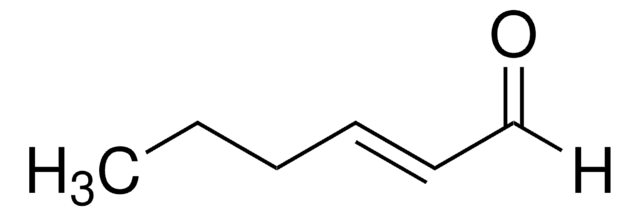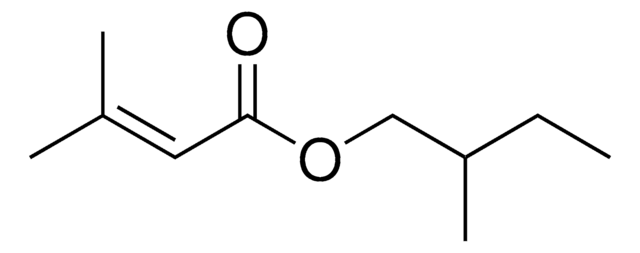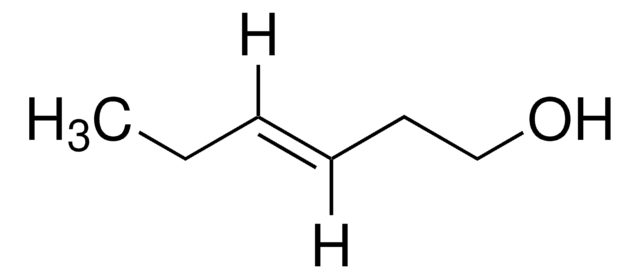W256102
cis-3-Hexenal solution
50% in triacetin, stabilized
Synonym(s):
(Z)-3-hexenal solution
About This Item
Recommended Products
biological source
synthetic
Quality Level
grade
Fragrance grade
Halal
Kosher
Agency
follows IFRA guidelines
reg. compliance
EU Regulation 1223/2009
FDA 21 CFR 117
contains
α-tocopherol as stabilizer (synthetic)
concentration
50% in triacetin
refractive index
n20/D 1.44
bp
20 °C/0.2 mmHg
density
0.982 g/mL at 25 °C
application(s)
flavors and fragrances
Documentation
see Safety & Documentation for available documents
food allergen
no known allergens
fragrance allergen
no known allergens
Organoleptic
apple; fatty; green; fruity
storage temp.
2-8°C
SMILES string
CC\C=C/CC=O
InChI
1S/C6H10O/c1-2-3-4-5-6-7/h3-4,6H,2,5H2,1H3/b4-3-
InChI key
GXANMBISFKBPEX-ARJAWSKDSA-N
Related Categories
Application
Disclaimer
Signal Word
Warning
Hazard Statements
Precautionary Statements
Hazard Classifications
Eye Irrit. 2 - Flam. Liq. 3
Storage Class Code
3 - Flammable liquids
WGK
WGK 3
Flash Point(F)
96.0 °F
Flash Point(C)
35.55 °C
Personal Protective Equipment
Regulatory Listings
Regulatory Listings are mainly provided for chemical products. Only limited information can be provided here for non-chemical products. No entry means none of the components are listed. It is the user’s obligation to ensure the safe and legal use of the product.
FSL
Group 4: Flammable liquids
Type 2 petroleums
Hazardous rank III
Water insoluble liquid
JAN Code
W256102-SAMPLE-K:
W256102-100G-K:
W256102-1KG:
W256102-25G:
W256102-SAMPLE:
W256102-25G-K:
W256102-1KG-K:
W256102-BULK-K:
W256102-VAR-K:
W256102-100G:
Choose from one of the most recent versions:
Already Own This Product?
Find documentation for the products that you have recently purchased in the Document Library.
Customers Also Viewed
Our team of scientists has experience in all areas of research including Life Science, Material Science, Chemical Synthesis, Chromatography, Analytical and many others.
Contact Technical Service











